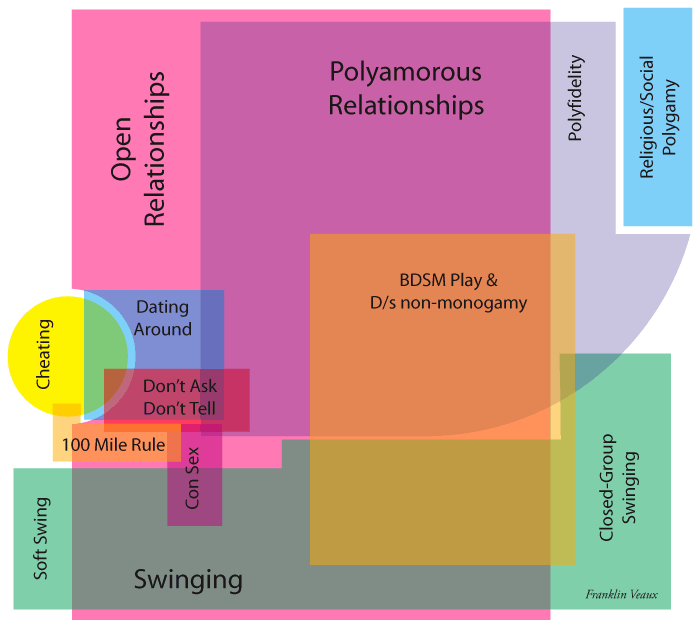I’ve been told, many times, that the word “polyamory” is not really necessary, as it’s simply a synonym for “open relationship” or “swinging” (or, depending on the person talking to me, “cheating”). This idea seems to assume that there’s really only one kind of non-monogamy, which is kind of silly.
I started thinking lately about the various ways in which a relationship can be non-monogamous, and the intersections between different sorts of non-monogamy, and after tinkering around with the notion for a while I’ve come up with this diagram.

A relationship can be non-monogamous without being open; cheating relationships, polyfidelitous relationships, and religious polygyny are all examples. I’ve made polyamory and swinging separate and nonoverlapping here, though of course a person can be polyamorous and also be a swinger (they’re two different behaviors engaged in by the same person, just as a person can be a swinger and also be a cheater, and so on).
BDSM throws a monkeywrench into the issue because there are so many ways that people involved in BDSM can be non-monogamous. I’ve seen people who play at play parties with other folks but don’t do so outside play parties and don’t form relationships; that sort of arrangement overlaps with swinging. I’ve seen various flavors of polyamorous and polyfi BDSM relationships. I’ve seen closed-group non-monogamy that isn’t quite polyamory and looks more like closed-group swinging, though God knows there’s some overlap between closed-group swinging and polyfi; I’ve known closed group swingers whose groups stay stable for longer than most marriages do. And there’s a sliver of non-monogamous BDSM relationships that don’t intersect with anything else; “I’ll arrange a gang bang for you and you’ll LIKE IT,” ferinstance.
And then there’s con sex, which overlaps with a whole lot of other stuff. But someone could probably write an entire book about con sex. And now that I think about it, I’d probably read it.

